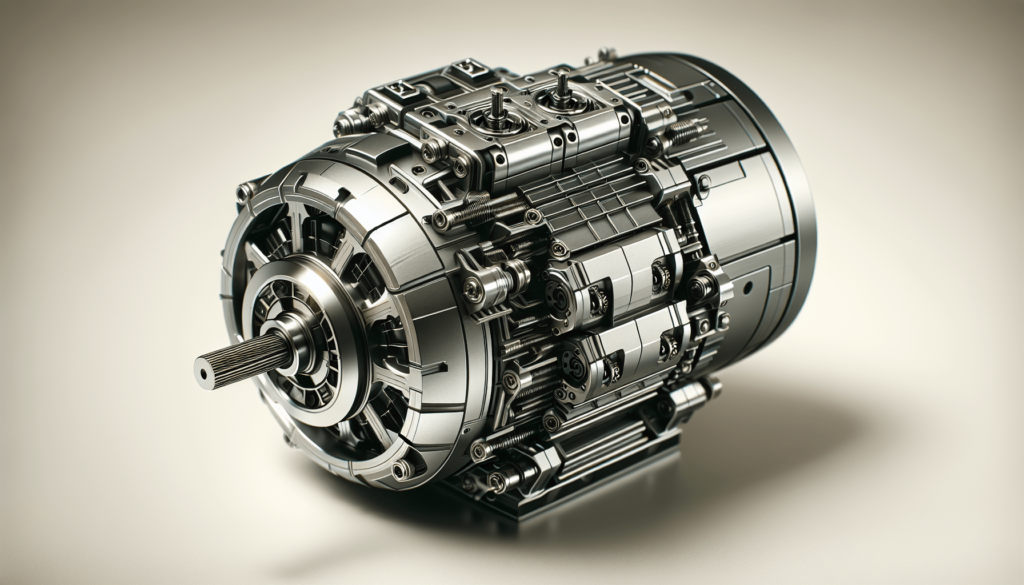
Have you ever wondered if a brushless DC motor can generate electricity? This question often comes up among hobbyists, engineers, and those curious about electrical engineering. A brushless DC (BLDC) motor might seem like a complex piece of technology, but its potential to generate electricity isn’t as far-fetched as it seems. Let’s explore this intriguing possibility in detail and discover how it might be possible.
Understanding Brushless DC Motors
Before diving into whether a BLDC motor can generate electricity, it’s important to understand how these motors work.
What is a Brushless DC Motor?
A brushless DC motor is a type of synchronous motor powered by direct current (DC). Unlike traditional brushed motors, BLDC motors use electronic commutation instead of mechanical commutation. This means that the function of the brushes is replaced by electronic controllers to switch the phases and power the motor.
How Does a Brushless DC Motor Work?
A BLDC motor consists of a rotor, typically comprising permanent magnets, and a stator made of wound or printed coils. Electronic controllers power the stator coils in a specific sequence, creating a rotating magnetic field that attracts or repels the rotor magnets, causing rotation. This rotation is smooth, efficient, and typically accompanied by less wear and tear compared to brushed motors.
Key Components of a BLDC Motor
Here’s a table that outlines the primary components of a BLDC motor and their functions:
| Component | Function |
|---|---|
| Rotor | Contains permanent magnets and moves under magnetic force |
| Stator | Comprises coils that generate the magnetic field |
| Electronic Controller | Switches current among stator coils, ensuring smooth motion |
| Hall Sensors | Detect rotor position and help the controller time the commutation correctly |
Principle of Electromagnetic Induction
To grasp how a BLDC motor can generate electricity, you need a basic understanding of electromagnetic induction.
What is Electromagnetic Induction?
Electromagnetic induction is a principle discovered by Michael Faraday, stating that a changing magnetic field within a coil of wire induces an electromotive force (EMF) or voltage in the wire. This principle underpins the operation of both electric motors and generators.
How Does It Work in Motors and Generators?
In motors, electrical energy is converted into mechanical energy by creating a rotating magnetic field with the coils, which moves the rotor. Conversely, in generators, mechanical energy causes the rotor to spin, creating a changing magnetic field in the stator coils, generating electrical energy.

Can a BLDC Motor Generate Electricity?
So, can a brushless DC motor generate electricity? The short answer is yes, but there are nuances to consider.
The Role of Mechanical Input
For a BLDC motor to generate electricity, it must be spun by an external mechanical force such as a turbine, crank, or any rotating machinery. By doing so, you’re essentially turning the motor into a generator.
Requirements and Challenges
To efficiently generate electricity with a BLDC motor, certain conditions and components are necessary:
- External Force: A sufficient mechanical input to rotate the rotor.
- Electronic Controller: A compatible controller to manage the power output.
- Stability: Maintaining consistent rotational speed for stable electricity generation.
Practical Situations
Generating electricity with BLDC motors is practical in various scenarios:
- Regenerative Braking: Used in electric vehicles to convert kinetic energy back into electrical energy.
- Wind Turbines: Small-scale wind turbines can employ BLDC motors.
Detailed Steps to Generate Electricity with a BLDC Motor
Generating electricity with a BLDC motor involves several steps. Here’s a breakdown:
Step 1: Choosing the Right Motor
Not all BLDC motors are created equal. Choose a motor that fits your power requirements and mechanical setup. Assess the motor’s voltage, current ratings, and physical size to ensure compatibility.
Step 2: Setup an Adequate Mechanical Input
Your mechanical input (such as a wind turbine or hand crank) needs to be able to spin the motor at a sufficient speed. Attach the motor securely to your mechanical input setup.
Step 3: Use a Suitable Controller
A controller or rectifier is necessary to manage the electricity generated. This controller will convert the three-phase AC generated by the spinning motor to DC power.
Step 4: Stabilize and Store the Output
Use capacitors or batteries to stabilize the generated voltage and store electricity. This ensures you have a consistent power supply and can use the generated electricity effectively.

Example Projects
It might be enlightening to look at some example projects that successfully use BLDC motors to generate electricity.
Small Wind Turbine Generator
A common example includes small DIY wind turbine generators. Hobbyists use BLDC motors from old electric scooters or e-bikes in their builds.
Energy Recovery Systems
Some electric vehicle makers incorporate BLDC motors in regenerative braking systems to recover energy otherwise lost during braking.
Benefits and Limitations
Understanding the pros and cons of using a BLDC motor for generating electricity can guide your decision-making process.
Benefits
- High Efficiency: BLDC motors are more efficient compared to their brushed counterparts.
- Longevity: Less wear and tear due to no brushes.
- Reliability: Fewer components mean fewer points of failure.
Limitations
- Complex Control Systems: Requires sophisticated controllers.
- Initial Cost: Generally more expensive.
- Technical Knowledge: Requires more technical know-how to set up and maintain.
Conclusion
So, can a brushless DC motor generate electricity? Absolutely! By understanding the principles of electromagnetic induction and following the necessary steps, you can effectively use a BLDC motor as a generator. Whether for small energy projects, regenerative braking, or wind turbines, the potential is there. With careful planning and the right components, you can tap into this versatile piece of technology’s power.
Feel free to experiment but always keep in mind the challenges and requirements involved. And who knows? You might just unlock new possibilities in your projects by leveraging a BLDC motor’s ability to generate electricity.
